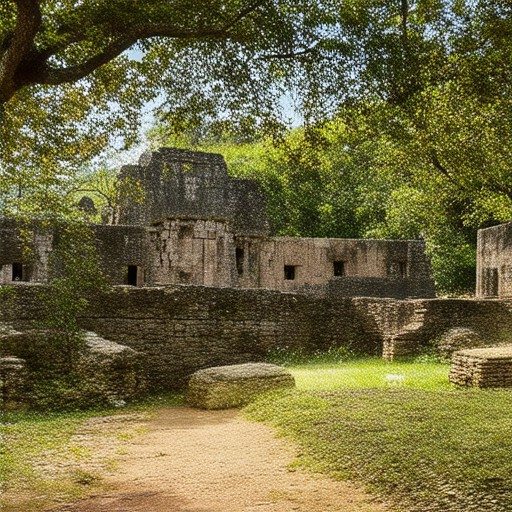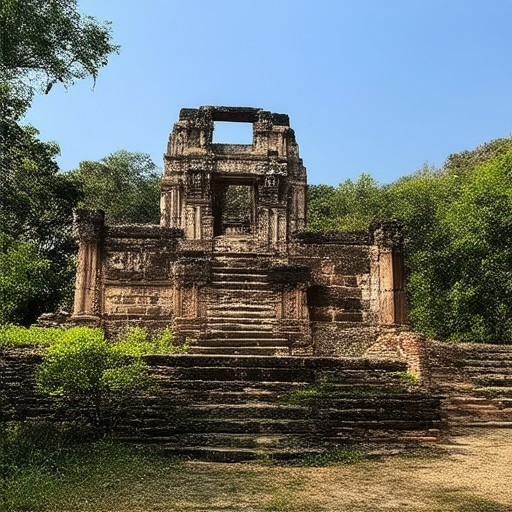Exploring the globe’s unique heritage destinations offers a fascinating journey through time, culture, and human achievement. These remarkable places, often recognized by UNESCO World Heritage Sites, stand out for their historical significance, architectural marvels, and cultural depth. From ancient ruins to vibrant cities, each unique heritage destination tells a story of resilience, innovation, and preservation efforts that span centuries. Whether it’s the towering pyramids of Egypt or the serene temples of Japan, these landmarks captivate visitors with their distinctive features and rich tapestries of life. In this article, we delve into what makes these unique heritage destinations truly special, uncovering the qualities that set them apart and the experiences that make them unforgettable.
Key Takeaways
– Explore Rich History: Immerse yourself in centuries of history, walking in the footsteps of ancestors and uncovering the events that shaped civilizations.
– Experience Vibrant Cultures: Engage in living traditions, festivals, and customs that blend ancient practices with modern life.
– Admire Iconic Architecture: Marvel at stunning architectural masterpieces and artistic expressions that define these destinations.
– Discover Timeless Beauty: Enjoy breathtaking landscapes that complement the cultural and historical attractions, offering a holistic travel experience.
– Delve Into Unique Stories: Learn about captivating tales and legends that add depth to your understanding of each destination’s heritage.
– Enjoy Global Accessibility: Benefit from modern amenities and transportation options, making these unique heritage destinations easily reachable for international travelers.

What Are the Unique Characteristics of Heritage Destinations?
Heritage destinations are unique because they offer an unparalleled opportunity to connect with history, culture, and tradition. These locations stand out due to their ability to transport visitors back in time, providing a window into the past while offering modern amenities and experiences.
- Historical Significance : Heritage destinations are often sites of historical events, archaeological findings, or cultural milestones. Places like ancient ruins, historical battlefields, or old-world cities preserve artifacts, traditions, and stories that shape our understanding of human development.
- Cultural Immersion : These destinations are known for their vibrant cultures, festivals, and traditions. Visitors can engage in local customs, participate in cultural activities, and learn about the daily lives of people from different eras and regions.
- Architectural Uniqueness : Many heritage destinations feature iconic architecture that reflects the artistic and engineering achievements of earlier civilizations. From medieval castles to colonial-era buildings, these structures showcase the diversity of design and craftsmanship.
- Storytelling Opportunities : Heritage sites are living museums that tell tales through their landscapes, monuments, and artifacts. Guides, local experts, and even signage provide narratives that bring history to life, making the experience educational and emotionally resonant.
- Sustainability Focus : Increasingly, heritage destinations prioritize eco-tourism and sustainable practices. Efforts to preserve natural surroundings, reduce environmental impact, and promote responsible tourism ensure these sites remain intact for future generations.
- Community Involvement : Many heritage destinations actively involve local communities in their preservation and development. This collaboration ensures that cultural heritage is respected, celebrated, and passed down to future generations.
Examples of such destinations include:
– UNESCO World Heritage Sites : A global network of landmarks recognized for their cultural, historical, and natural significance.
– Historic Cities : Places like Rome, Kyoto, and Marrakech that have been centers of commerce, governance, and cultural exchange for centuries.
– Natural Monuments : Geographical formations like the Grand Canyon, Petra, and the Great Barrier Reef that shaped the Earth’s landscape.
– Modern Interpretations : Museums, cultural festivals, and themed attractions that recontextualize historical elements for contemporary audiences, such as the Louvre Abu Dhabi or the Terracotta Warriors Museum.
By visiting these unique heritage destinations, travelers gain a deeper appreciation for the richness of human history and the importance of preserving cultural legacy for future generations.
What Makes Unique Heritage Destinations Stand Out Globally
Unique heritage destinations are celebrated worldwide for their distinct characteristics, historical significance, and cultural richness. Here’s what sets them apart:
- Rich History and Culture: These destinations often boast deep-rooted histories and vibrant cultures that are unlike any other. From ancient ruins to living traditions, they offer a window into the past and present.
- Iconic Architecture: Many heritage sites feature awe-inspiring structures that are synonymous with their locations. These architectural marvels often tell stories of their creators and the eras they were built in.
- Natural Beauty: Some heritage destinations are renowned for their stunning landscapes. These places combine natural wonders with historical or cultural significance, making them truly unique.
- Unique Experiences: Visitors can enjoy once-in-a-lifetime experiences that are hard to find elsewhere. Whether it’s exploring ancient cities, encountering wildlife, or participating in traditional customs, these experiences are unforgettable.
- Cultural Immersion: Many destinations allow travelers to dive deeply into local cultures. From traditional festivals to authentic cuisine, these places offer opportunities for meaningful connections with local traditions.
- Accessibility and Connectivity: Well-known heritage destinations are typically well-connected, making them easily accessible to international travelers. This accessibility, combined with their unique offerings, ensures they remain popular among globetrotters.
- Storytelling and Mythology: Many heritage sites are shrouded in fascinating tales and myths. These stories add layers of intrigue and interest, making the destinations more captivating and memorable.
These qualities collectively make unique heritage destinations some of the most sought-after travel experiences globally, offering something extraordinary for every traveler.

What Are the Most Iconic Unique Heritage Destinations Around the World?
The world is filled with remarkable historical and cultural landmarks that offer a glimpse into the rich tapestry of human civilization. Here are some of the most iconic unique heritage destinations:
- Ancient Egyptian Pyramids – Egypt The Great Pyramid of Giza, built over 5000 years ago, stands as a marvel of ancient engineering and architecture. Its intricate design and historical significance make it a must-visit for history enthusiasts.
- Great Wall of China – China Stretching over 13,000 miles, the Great Wall is one of the most impressive man-made structures in history. It offers breathtaking views and a deep connection to China’s imperial past.
- Taj Mahal – India Built by Emperor Shah Jahan in memory of his wife Mumtaz Mahal, the Taj Mahal is a symbol of love and one of the Seven Wonders of the World. Its white marble facade and intricate craftsmanship are unparalleled.
- Angkor Wat – Cambodia Constructed in the early 12th century, Angkor Wat is a temple complex that served as the capital of the Khmer Empire. Its grandiose size and intricate carvings highlight the achievements of ancient Cambodian civilization.
- Machu Picchu – Peru Perched atop a mountain, Machu Picchu is the most famous archaeological site in South America. Its well-preserved Incan ruins offer a fascinating glimpse into the history and culture of the Andean people.
- Colosseum – Rome, Italy The Colosseum, once the center of gladiatorial contests in ancient Rome, is an iconic symbol of Roman power and engineering. Its massive scale and historical significance make it a cornerstone of European history.
- Stone Circles of Avebury – England Part of the larger Stone Age heritage, Avebury’s stone circles are among the oldest and largest prehistoric monuments in Europe. Their mysterious origins and spiritual significance draw visitors worldwide.
- Chichen Itza – Mexico Chichen Itza, a Mayan city built between 600-900 AD, is renowned for its pyramid-temples and intricate stone architecture. Its influence extends beyond its borders, making it a key stop for anyone exploring Mesoamerican cultures.
- Hampi – India Hampi, the ruins of the Vijayanagara Empire’s capital, showcase the grandeur of medieval India. Its vast boulders and ancient temples reflect the ingenuity and ambition of ancient builders.
These destinations offer a blend of history, art, and culture that captivates travelers and historians alike. Each location carries its own unique story, making them truly iconic and unforgettable experiences.

What Are the Distinctive Qualities That Make Unique Heritage Destinations Stand Out Worldwide?
Heritage destinations are more than just places—they are gateways to understanding the richness of human history, culture, and art. Here are the key qualities that set these destinations apart:
- Rich History and Cultural Significance: Many heritage destinations are steeped in centuries of history, offering visitors a chance to walk in the footsteps of ancestors and explore the events that shaped civilizations. From ancient ruins to historic battlefields, these sites provide insight into the development of human society.
- Vibrant Cultures and Traditions: Immerse yourself in the living traditions of local communities. Experience festivals, rituals, and customs that have been passed down through generations, giving a unique perspective on modern life rooted in ancient practices.
- Iconic Architecture and Art: These destinations often boast stunning examples of architectural masterpieces and artistic expressions. From medieval castles to contemporary museums, the visual and structural elements create a lasting impression on visitors.
- Timeless Natural Beauty: Beyond human-made wonders, many heritage sites are surrounded by breathtaking landscapes. These natural environments complement the cultural and historical attractions, offering a holistic travel experience.
- Unique Stories and Legends: Each destination has its own tales and legends that add layers of intrigue and fascination. These stories often tie into the history and culture, enriching the visitor’s understanding of the site.
- Global Connectivity and Accessibility: Modern amenities and transportation options make these destinations accessible to a global audience. Whether by air, sea, or land, reaching these spots is easier than ever, catering to international travelers.
Exploring these qualities allows travelers to connect with the past in ways that are both educational and inspiring. From the ancient cities of Europe to the sacred temples of Asia, each heritage destination offers a unique window into the diversity of human achievement.
Distinct Qualities of Unique Heritage Destinations
Unique heritage destinations stand out worldwide due to their exceptional combination of historical significance, cultural richness, and architectural marvels. These places offer a deep connection to the past, providing visitors with a sense of authenticity and inspiration.
- Rich History and Cultural Significance: Many heritage destinations are steeped in centuries of history, offering insights into ancient civilizations, empires, and societal evolution. Sites like Machu Picchu, the Great Wall of China, and the Pyramids of Giza provide a window into the achievements of past cultures.
- Vibrant and Living Cultures: Authentic cultural experiences are a hallmark of unique heritage destinations. Festivals, traditional music, dance, and cuisine allow visitors to immerse themselves in local traditions. Cities like Kyoto, Japan, and Marrakech, Morocco, showcase living cultures deeply rooted in history.
- Stunning Architectural Masterpieces: These destinations often boast iconic structures that showcase advanced engineering and artistic craftsmanship. The Taj Mahal, Hagia Sophia, and Notre-Dame Cathedral are examples of architectural brilliance that captivate audiences.
- Hidden Treasures and Unexplored Gems: Beyond the famous landmarks, many heritage destinations hide lesser-known treasures. These sites offer a chance to discover untouched beauty and historical secrets, making them a magnet for adventurous travelers.
- Authentic Local Experiences: Unique heritage destinations prioritize genuine interactions with local communities. Visitors can engage in hands-on activities, such as traditional crafts, cooking classes, or guided tours led by knowledgeable locals, enriching their understanding of the destination’s heritage.
These qualities make unique heritage destinations not just places to visit, but experiences that resonate deeply with travelers seeking to connect with the past and gain a deeper appreciation for cultural diversity.
Explore UNESCO World Heritage Sites
National Geographic Cultural Resources

What Defines a Unique Heritage Destination?
A unique heritage destination is characterized by a combination of rich history, unique cultural experiences, distinctive architecture, and natural beauty, all supported by preservation efforts and captivating storytelling. These elements create an unforgettable experience for visitors, setting these destinations apart from ordinary travel spots.
1. Rich History
A unique heritage destination is rooted in a deep and meaningful past. It often boasts ancient ruins, historical landmarks, and sites associated with significant events. For instance, Rome is celebrated for its historical monuments like the Colosseum and the Vatican, which trace back thousands of years. The presence of historical significance gives these places a timeless charm that is hard to replicate.
2. Unique Cultural Experiences
These destinations offer authentic cultural experiences that are not found elsewhere. From traditional festivals and rituals to local cuisines and artisanal crafts, visitors can immerse themselves in the local culture. Japan’s tea ceremonies and Mexico’s Day of the Dead celebrations are examples of culturally rich experiences that define unique heritage destinations.
3. Distinctive Architecture
Notable architecture often sets these destinations apart. Iconic structures like the Taj Mahal in India or the Great Pyramid of Giza in Egypt showcase design and craftsmanship that are unparalleled. These buildings reflect the ingenuity and artistic skills of the people who built them, making them symbols of their respective cultures.
4. Natural Beauty
Some heritage destinations are renowned for their stunning landscapes. The Great Barrier Reef in Australia, for example, combines natural beauty with historical significance as a UNESCO World Heritage Site. Its coral reefs and marine life provide a unique backdrop for exploration and appreciation.
5. Preservation Efforts
Effective preservation efforts are crucial for maintaining the integrity of these destinations. Cities like Kyoto in Japan have successfully protected their historic temples and shrines, ensuring that their cultural heritage remains intact for future generations. Preservation initiatives highlight the commitment to safeguarding unique heritage.
6. Captivating Storytelling
Guides and narratives that bring history to life enhance the visitor experience. Museums, historical walking tours, and storytelling programs provide context and meaning to the sites visited, turning a visit into an educational journey.
Conclusion
A unique heritage destination is more than just a place; it is a tapestry woven with history, culture, architecture, and nature. These elements work together to create a memorable experience that sets these destinations apart, making them irreplaceable in the eyes of travelers.




0 Comments